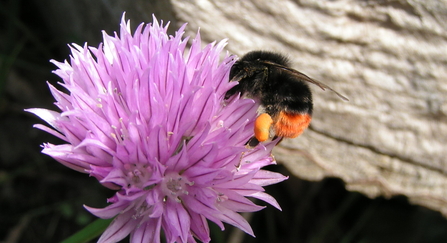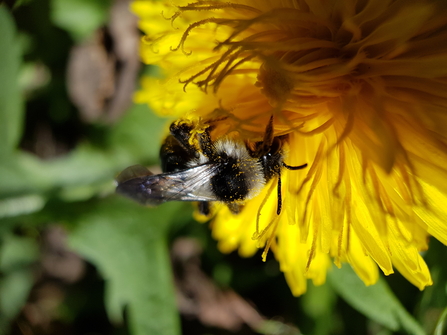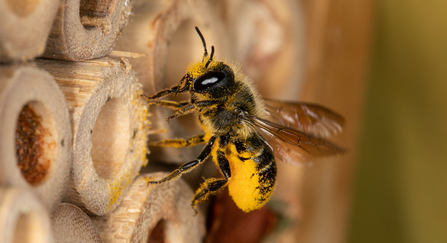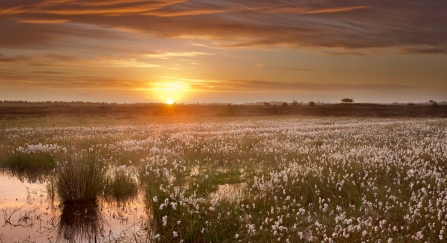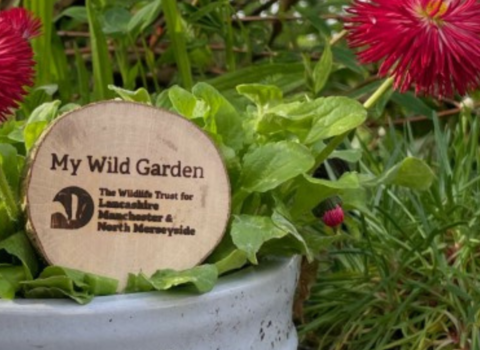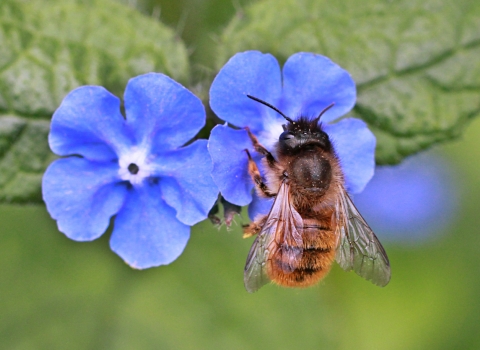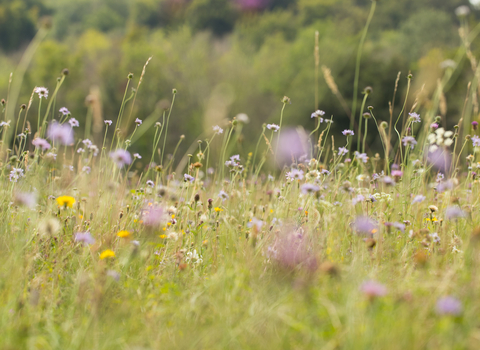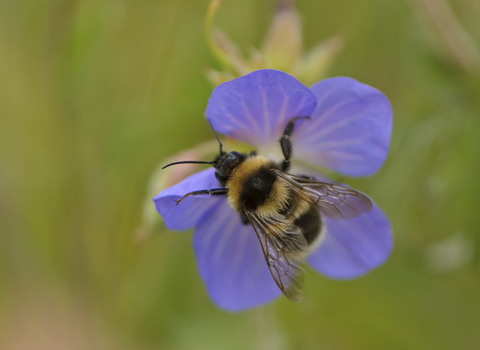You don’t need a huge garden to help bees at home. Yards, balconies, and even doorsteps with just a couple of plant pots can help the UK’s bees to cling on. Gardening for bees is all about using your space wisely and bearing bees’ needs in mind when you plan your outdoor space. Here are our top tips.
Plant bee-friendly flowers and herbs
Unfortunately, not all plants are bee-friendly. Many of the blooms available in garden centres have been bred purely for their looks and, as a result, have double or multi-petalled flowers which block bees’ access to nectar. These flowers can even lack nectar and pollen completely. So what are the best bee-friendly plants?
Native plants
Bees, like many of the UK’s insects, evolved alongside our native wildflowers for millions of years, so adding them to your garden is a great way to help bees thrive. Some of their favourites include:
- Scabious
- Betony
- Comfrey
- Viper’s bugloss
- Knapweeds
- Thistles
- Bugle
- Heathers
- Ivy
- Ox-eye daisies
The good thing about native flowers is that they’re also relatively hardy and tend to be more resistant to pests.
Nectar-rich herbs
As well as giving you a ready supply of delicious ingredients for your cooking, home-grown herbs are brilliant for bees. When they flower, they’re rich in nectar and attract some of the most common garden bumblebees and solitary bees, including red-tailed bumblebees and red mason bees. Herbs are also some of the best bee-friendly plants for pots, window boxes and planters – ideal if your outdoor space is on the smaller side. Try these:
- Rosemary: Flowers in spring and may continue throughout the year. Add to pasta sauces and roast potatoes.
- Thyme: Flowers in summer. Delicious in risotto.
- Chives: Flowers in spring and summer. A tasty addition to potato salad.
- Marjoram: Flowers in summer and early autumn. Sprinkle onto pizza or stir into salads.
- Sage: Flowers in late spring and summer. Works beautifully with butternut squash.
- Lemon balm: Flowers in summer. Use it to liven up pesto.


